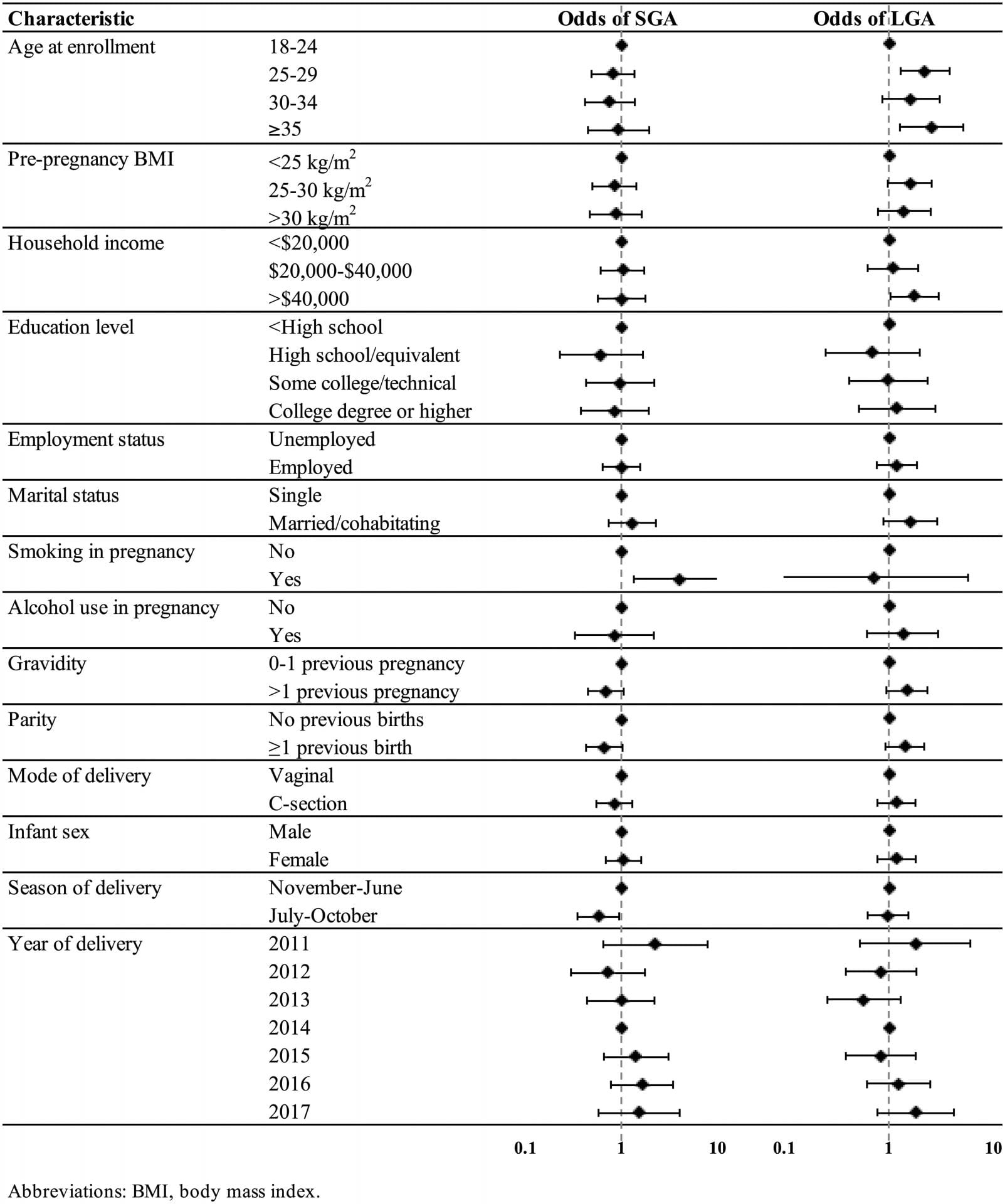PROTECT Study intermediate report: associations between demographic risk factors and preterm birth in the first 1000 participants
Since PROTECT has started studying the environmental causes of higher levels of preterm birth in Puerto Rico preterm birth rates have dropped significantly; from 18% of all births in 2011 which was considered the highest in the world, to 11% by 2017.[1] However, this rate still ranks amongst the highest rates in the world; especially amongst developed nations. There is no clear explanation for what causes these higher rates of preterm birth on the Island, which led our researchers to investigate this potentially vulnerable population. While the goal of PROTECT is to investigate environmental contaminants as potential causes of preterm birth, PROTECT Researchers also investigate the demographic and behavioral characteristics that have been well established predictors of preterm birth in scientific literature, such as maternal age, socioeconomic factors, tobacco use in pregnancy, and maternal body mass index (BMI) within the cohort.
Cohort participants where recruited from the island’s most heavily contaminated Northern Coast from collaborating hospitals and health clinics and were asked to fill out an initial screening form that collected information on demographic characteristics. After the initial screening, women are invited to participate in 3 additional study visits. In the first visit, urine and blood samples are collected, and questionnaires are administered to collect information on demographic characteristics, personal care product use, and current and previous health complications. During the second visit, researchers visit the participants in their homes to gather additional urine samples and information on behavioral characteristics, medication use, physical activity, stressful life experiences, produce/pesticide use, as well as their dietary intake patterns. The third visit is performed in the clinics and collects all the same information as in the first visit with the addition of questionnaires asking about psychological stress and social support during their pregnancy. Upon delivery hospitals and clinics collect detailed information on the pregnancy outcomes which included birth weight and other newborn measurements as well as pregnancy complications. In the present study, PROTECT Researchers focused their analysis on the demographic, behavioral, pregnancy characteristics, as well as the municipality associated with the residence and examined associations with gestational age at delivery and preterm birth. Gestational age is defined as the time period between conception and birth,[2] and delivery before 37 weeks completed gestation is defined as preterm. Researchers also analyzed adverse pregnancy outcomes including preeclampsia, gestational diabetes, low birth weight, and macrosomia.

Fig 3. Odds ratios and 95% confidence intervals for delivery of small for gestational age (SGA) and large for gestational age (LGA) newborns in association with demographic and pregnancy characteristics in the PROTECT cohort 2011–2017
After analysis of 1028 live births from cohort participants between August 2011 and July 2017, prior to Hurricanes Irma and Maria, we found that low socioeconomic status, particularly for individuals with lower levels of education, was associated with increased risk of preterm birth, as was high BMI. Maternal tobacco use in pregnancy and delivery during the hurricane and dengue season were associated with increased risk of delivering a small baby, which is consistent with other cohort studies in the U.S. and worldwide. PROTECT researchers hypothesize that environmental exposures may be responsible for some of the socioeconomic differences observed in association with preterm birth and a new publication investigating these factors is under review.
To learn more about these study finding, please see our recent publication.
